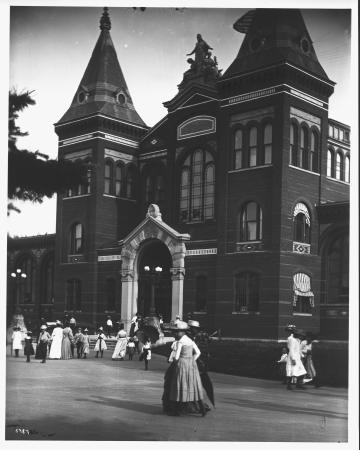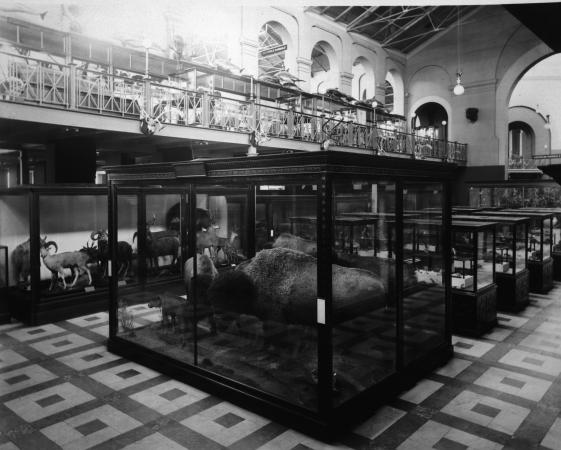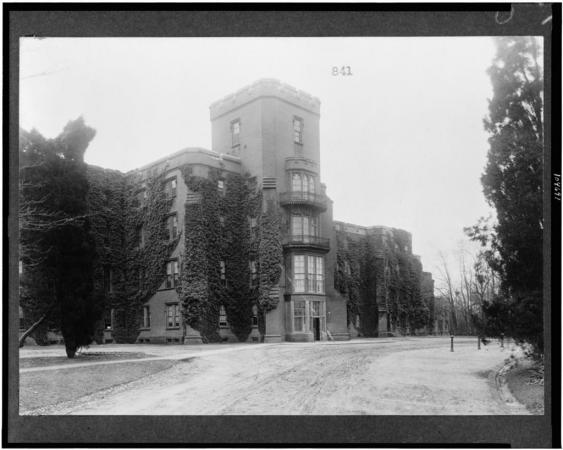In its 173-year history, the Smithsonian has not been immune to crime. The organization has battled theft, embezzlement, and, in this 1907 case, even murder. Buckle up, it’s time for yet another Smithsonian story that left me stunned at my computer, mumbling, “Wait. Did that really happen?”

Philadelphia artist Otto Seelhorst had been in Washington, D.C. for less than twenty-four hours before he paid a visit to a former colleague he knew to be working at the U.S. National Museum. Around 10:30 in the morning on January 16, 1907, Seelhorst entered the museum, carrying two packages, and asked a carpenter for directions. Upon arrival to his destination, he greeted his acquaintance, who hesitated before finally recognizing the artist.
Abruptly and unexpectedly, Seelhorst then went back into the hallway, opened one of the packages, which had been concealing a rifle, reentered the office, and fired.
Nearby Smithsonian employees heard pops and rushed to the scene. There, they found Seelhorst calmly gripping the gun and standing over lithographer Franciscus “Frederick” von Iterson’s lifeless body.
Strangely enough, museum visitors that day heard nothing.
Von Iterson was only temporarily working for the Smithsonian before he planned his return to his home base in Philadelphia. He had been recently hired to create scientific drawings for Marcus W. Lyon, assistant curator in the Division of Mammals.

When investigators spoke to Seelhorst, who put up no fight upon arrest, they asked if he felt remorse about his actions. Seelhorst promptly responded that he did not.
But what could be the motive of this sudden crime?
Although investigators were quick to consider the prisoner “insane,” Seelhorst argued that the act was not random. In a signed statement to the grand jury, notably written by investigators and signed by Seelhorst, the prisoner allegedly explained:
About fifteen years or more ago I was working for the Keterlinus Manufacturing Company at the corner of 4th and Arch streets, Philadelphia, Pa. Mr. Von Iterson was working there at that time, or when I was fifteen or sixteen years of age, Mr. Von Iterson induced me to submit to an immoral act which wrecked my life and in order that he should not teach other young men to indulge in this practice I concluded to put him out of the way.
To further challenge the insanity argument, investigators spoke to a doctor at the Easton Sanitarium in Pennsylvania, where Seelhorst had been treated the year prior. The doctor said that the artist had been in “good” condition just the week before his trip to the capital.
The next day, only two days after the crime, the Evening Star reported that Julius Seelhorst visited his brother in jail. After their talk, Julius disclosed to police that his brother had suffered a “sunstroke” two years prior, and that he had never heard his brother mention von Iterson until after the killing.
With what was reported in newspapers at the time, it would have been difficult for the public to consider Seelhorst of sound mind. A couple Washington Post headlines read: “Slayer Doubtless a Maniac” and “Suffered a Breakdown.”

On March 28, 1907, in a trial that lasted less than ninety minutes, a jury found Seelhorst not guilty by reason of insanity, and the artist was committed to the Government Hospital for the Insane, now known as St. Elizabeths Hospital.
Related Resources
- “Wait. Did That Really Happen?” by Emily Niekrasz, The Bigger Picture, Smithsonian Institution Archives
- “Crime at the Smithsonian,” by Pamela M. Henson, Smithsonian Institution Archives
- Chronology: Artist Murdered at the National Museum, Smithsonian Institution Archives
- “National Museum Scene of Murder,” Evening Star, 16 January 1907
- “For the Grand Jury Action in the Case of Otto Seelhorst,” Evening Star, 17 January 1907
- “On Plea of Insanity Probable Defense to be made for Otto Seelhorst,” Evening Star, 18 January 1907
- “Slayer Found Insane Jury Acquits Otto Seelhorst in Record Time,” Washington Post, 29 March 1907
Produced by the Smithsonian Institution Archives. For copyright questions, please see the Terms of Use.

Leave a Comment